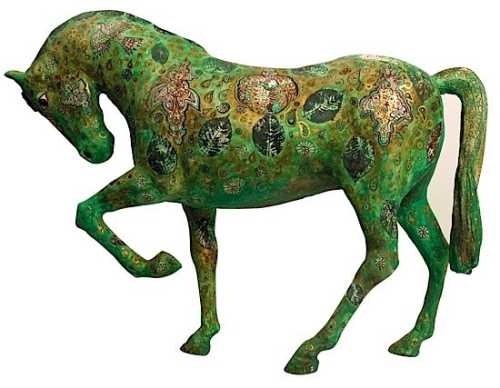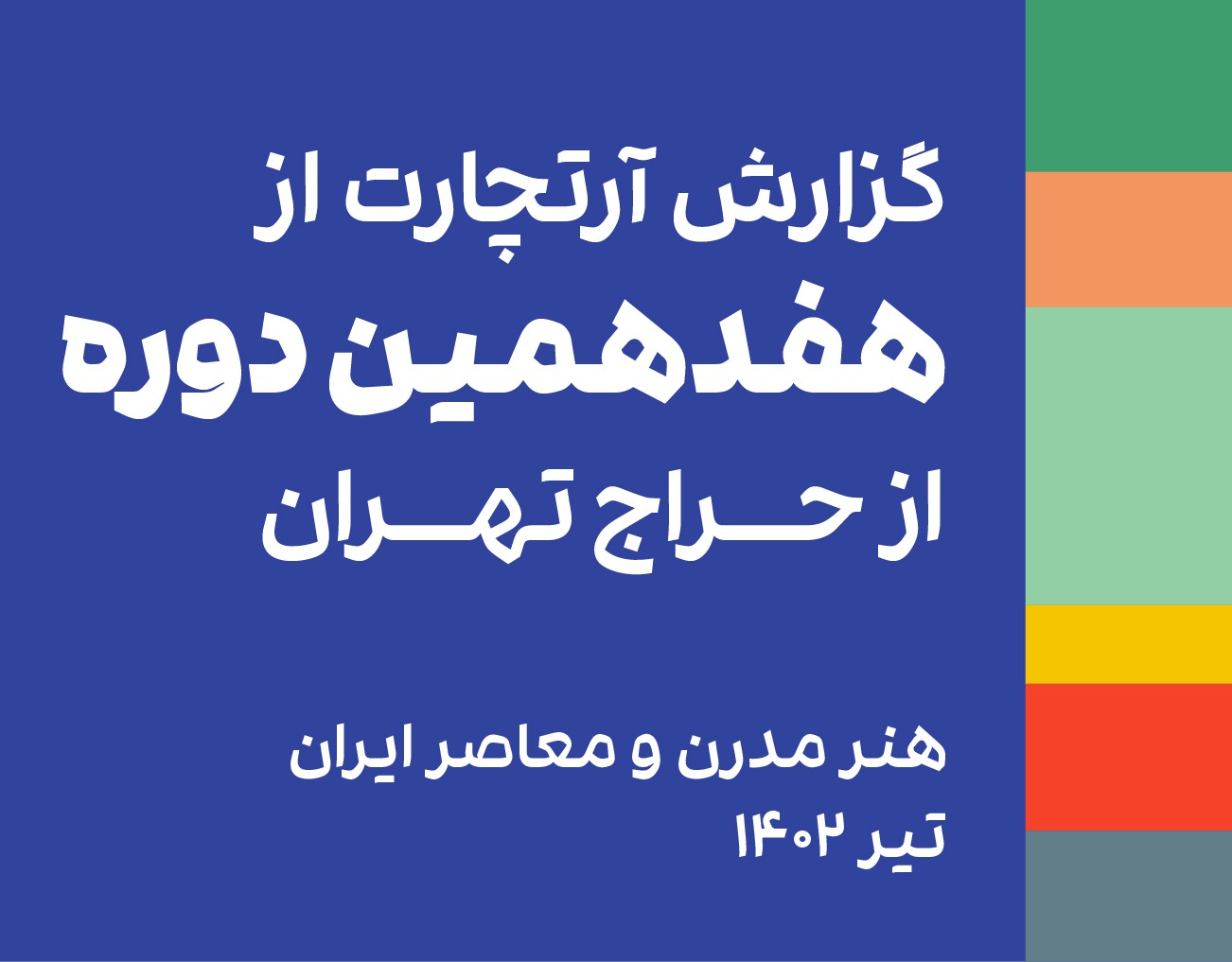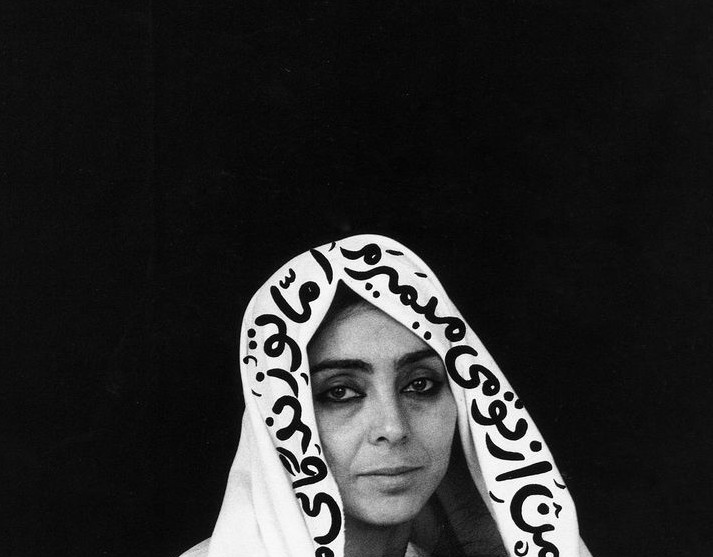About Gizella Varga Sinai
Gizella Varga Sinai was born in Czestochowa, Hungary, moved to Austria, and studied at the Vienna School of Decorative Arts, where she received a BA in art teaching. There, she met Khosrow Sinai, an Iranian filmmaker, and married him, and in 1967 she came to Iran with her husband and settled in Tehran. A year after that, Gizella's first solo exhibition was in Tehran's Modern Art Gallery. In 1978, she won the "Mirror in the Mirror" exhibition prize. Gizella taught at Tehran's contemporary studio between 1981 and 1987, then taught art in the schools of the German Embassy for 25 years. Gizella became a member of the Dena art group in 2001. A group of Iranian female artists (including Faridah Lashai, Farah Usoli, Maryam Shirinlou, Shahla Habibi, Rana Farnoud, etc.) who, in their 6-year career, have had exhibitions in different countries of the world such as Poland, Switzerland, Hungary, Holland, Belgium, Germany, and Iran. The most important of these feats occurred in the United Nations building in Geneva, the European Parliament building in Brussels, and the Ludwig Museum in Koblenz. These artists also exhibited their works in Zanjan, Rafsanjan, Isfahan, and Yazd.
Most of Gizella's paintings subjects are simple scenes that everyone, including the painter, comes across in their daily life; if, like her, he is Hungarian and lives in Iran, what he remembers from these sights are things like Sizdeh Bedar, Looti Antari, Amoo Nowruz, etc. But Gizella's perception of such factors and mirrors differs from what every eye sees. She does not hesitate to express the most instinctive and emotional comments about these issues in her paintings. Thus and for this reason, in the Sizdeh Bedar painting, she paints the samovar in green, the saucer cup in yellow, the waxy shoes in blue, Looti Antri in green, and so on.
Gizella wrote in the catalog of her first solo exhibition at the New Art Gallery: "In short moments, inexpressive feelings are hidden. So inexpressive and fleeting that they can neither open a lip to laugh nor tear an eye. The only sign of their existence is the color that changes in a moment, and that's it. I am happy if I can find such lost feelings in a tangle of my lines and colors, which are so short and compressed in moments." By mentioning these lines in the book Ninety Years of Innovation in Iran's Visual Art, Javad Mojabi emphasized the narrative character of Gizella's paintings. Mojabi writes about the later period of her works, which take on a more bitter color: "Gizella's creatures such as idols and stone idols, animal men, ruined and abandoned buildings, faces covered in dust, buried in slippery moss and deep water; to reach present, in this interval of corrosive time, they lose their vital power; Faces become blurred, stones crack, buildings topple from their foundations, and everything from its healthy existence, until it wants to reach the present, is distorted, becomes sick, and is broken by horrible nightmares; And what ends up here is a corpse that can't justify its presence... She tried to dust off the past."
The Most Expensive Artwork
At Auctions
First Attendance
24 October 2009
# Attendance
11
# Artworks
11
Average Realized Price
7,328 USD
Average Min Estimate
6,035 USD
Average Max Estimate
8,720 USD
Sell-through Rate
88.889%
Average Growth of Artwork Worth
45.608%
Timeline
The 23rd Tehran - Modern and Contemporary Iranian Art auction
22 May
Fragments of Persian Modernity: Selected pieces from Iranian Modern and Contemporary Art exhibition
13 April
Ornament exhibition
24 January
Fine Arts auction
10 December
The Rhetoric of Objects exhibition
6 December
FINE FOLK OUTSIDER auction
18 November
… And Poetry Will No Longer Serve exhibition
15 November
Timeless Creation exhibition
25 October
Darrous, 34 exhibition
2 August
Contemporary Art Collector exhibition
28 June
Hafez Divination exhibition
26 April
Fine Arts auction
17 April
+-50 exhibition
15 March
10s of Artworks, 10s of Millions exhibition
8 March
A Glance at Sketching exhibition
8 March
Golestan Is My Dream exhibition
15 December
A Selection of 70 Years of Iranian Sculpture exhibition
4 August
The 17th Tehran Modern and Contemporary Iranian Art auction
18 July
Rana Farnoud, Farideh Lashai, Farah Ossouli, Gizella Varga Sinai exhibition
23 June
Ordibehesht exhibition
12 May
The Flor's Scent And Bird's Song exhibition
5 May
A Nostalgic Glimpse exhibition
26 August
Tehran- 16th- Iranian contemporary art auction
1 July
Mohammad Siyah-Qalam Award 1 exhibition
22 April
Group Painting Show Negar exhibition
28 January
One by One exhibition
3 July
Show and Sell of Works for the Benefit of Corona Patients exhibition
24 April
No.2 auction
6 March
Shabtab 7 exhibition
14 February
Illusion, Virtualism and Surrealism in Iranian Contemporary Art exhibition
24 January
5th Collector exhibition
24 January
White Black Gray exhibition
13 December
Ms. and Mr. Artist exhibition
16 August
Influence exhibition
9 November
+۹۶ exhibition
16 February
Shabtab 3 exhibition
31 January
هشتمین دوره حراج تهران auction
12 January
The 6th Tehran- Contemporary Iranian Art auction
23 December
Group exhibition exhibition
30 September
United Nations World Food Programme - Charity auction
30 April
Art Moderne et Contemporain Iranien et Arabe auction
24 October
Articles
۱7th Tehran Auction Sales Report 26 July 2023
The 17th Tehran auction: modern and contemporary, was held on Friday July 21st, 2023 at Parsian Azadi Hotel. This auction achieved a total sale of 214 billion tomans equivalent to 4.3 million dollars, which was a growth of 77.8% compared to the previous period. Artchart has observed the 17th Tehran auction in the upcoming report.
Female Art Players in Iran's and Middle East's Art Scene 23 May 2023
Women have always played an important role in the development of Middle Eastern culture and art, while there are few references to their activities in art history books. Recently, there have been many efforts to recognize female artists and their influences, but the women who have been involved in the presentation of art, are still lesser-known actors in the region's art world. This...


